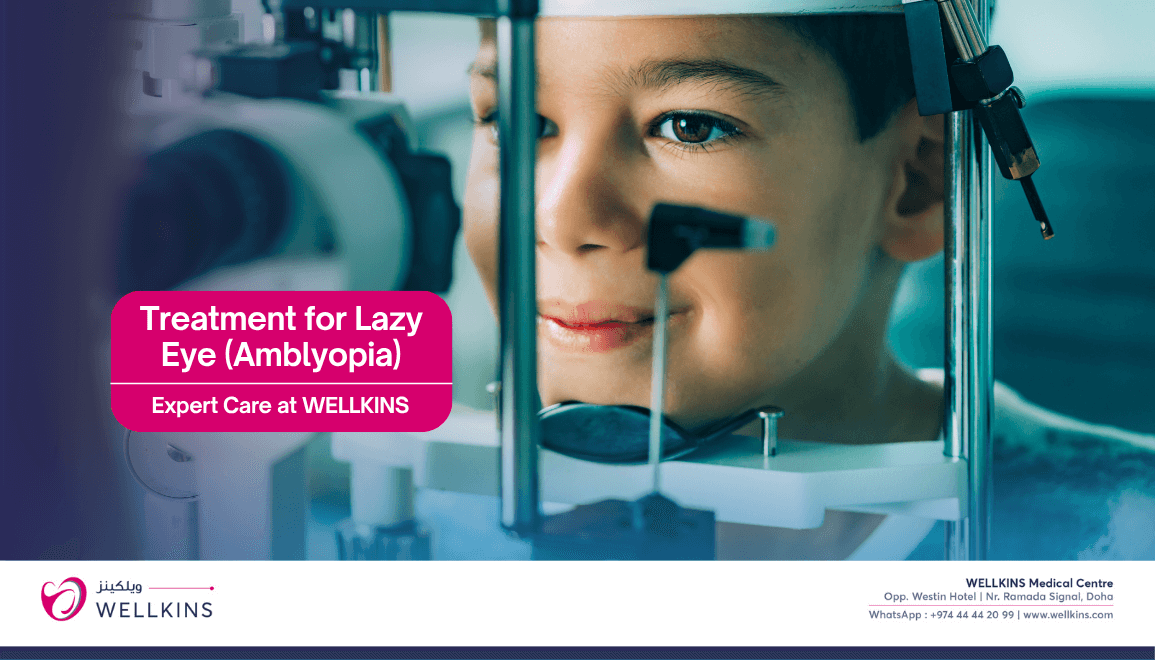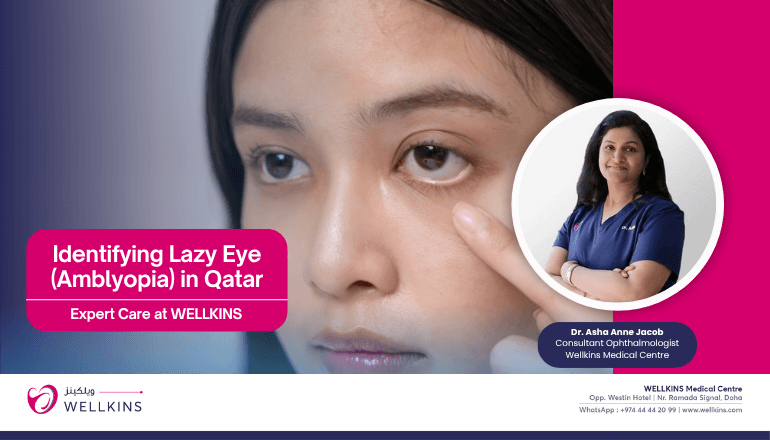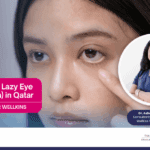Author: Dr. Asha Anne Jacob (Consultant Ophthalmologist Wellkins Medical Centre)
As parents, we constantly monitor our children’s development, and their vision is a crucial part of how they interact with the world. One common childhood vision disorder that often raises questions is lazy eye, medically known as amblyopia. At Wellkins Medical Centre, our pediatric ophthalmology and optometry specialists are dedicated to ensuring every child achieves their best possible vision. Understanding amblyopia is the first step toward effective treatment.
What Exactly Is a Lazy Eye (Amblyopia)?
Amblyopia isn’t truly about one eye being “lazy” in the sense of not working. Instead, it’s a condition where one eye, or some times both, fails to achieve normal visual acuity, even with the best corrective lenses (glasses or contact lenses). It’s a problem with how the brain processes images from the eye, not primarily a problem with the eye itself.
Here’s how it happens: during early childhood, the brain and eyes learn to work together. If one eye sends a blurry or “bad” image to the brain consistently, the brain starts to favor the clearer image from the “good” eye and essentially begins to ignore or suppress the signals from the weaker eye. Over time, the nerve pathways connecting the weaker eye to the brain don’t develop properly, leading to reduced vision in that eye.
Crucially, amblyopia typically develops from birth up to around age 7, making early detection and treatment absolutely vital for long term success. Beyond this critical period, the brain’s visual system becomes less adaptable, and treatment is much less effective.
Amblyopia, or lazy eye, is reduced vision in one eye because the brain favors the other eye during childhood development. It is the failure of the brain’s visual pathway to mature, usually caused by uncorrected vision differences (like far sightedness or strabismus). The main solution is to force the brain to use the weak eye through patching (covering the strong eye), specialized corrective glasses, or vision therapy. Early and consistent treatment is essential for achieving good, functional vision.
The goal of amblyopia treatment is to force the brain to pay attention to the weaker eye, thereby strengthening the nerve connections. Treatment typically involves:

1. Addressing the Underlying Cause:
Glasses or Contact Lenses: Correcting significant refractive errors in one or both eyes are the first step, providing the clearest possible image to the brain.
Surgery: If strabismus is severe or if there’s a vision-blocking issue like a cataract or ptosis, surgery may be performed to align the eyes or remove the obstruction.
2. “Penalizing” the Stronger Eye:
This is the core of amblyopia treatment and encourages the brain to rely on the weaker eye.
Patching: Covering the stronger eye with an adhesive patch for several hours a day, as prescribed by the ophthalmologist. This is the most common and often most effective method.
Atropine Drops: Placing atropine drops in the stronger eye can temporarily blur its vision, making the weaker eye work harder. This is sometimes used as an alternative to patching, especially for younger children.
Vision Therapy: Specialized exercises and activities designed to improve eye-brain coordination and visual skills.
Consistency is key with any treatment plan. Parents play a crucial role in ensuring adherence to patching schedules or atropine use.
Your Child’s Vision: The Path to Clarity
Amblyopia or Lazy eye is a common but serious childhood condition that demands our attention, but the journey to overcoming it is well-defined and highly successful when started early. Recognizing the subtle signs like a consistent head tilt, poor depth perception, or a noticeable eye turn is the most critical action a parent can take. Early detection and immediate intervention provide the best chance for full visual recovery, as the young brain is incredibly neuroplastic and responsive to treatment. If you have noticed any concerning visual behaviors in your child, or if they haven’t had a recent inclusive eye examination, it’s vital to seek professional guidance. At Wellkins Medical Centre, we Equipping you with the knowledge about patching, corrective lenses, and the underlying causes of amblyopia and ensures you become the most effective advocate for your child’s visual future. Also prioritizing this aspect of their development is an investment in their learning, coordination, and overall quality of life.






